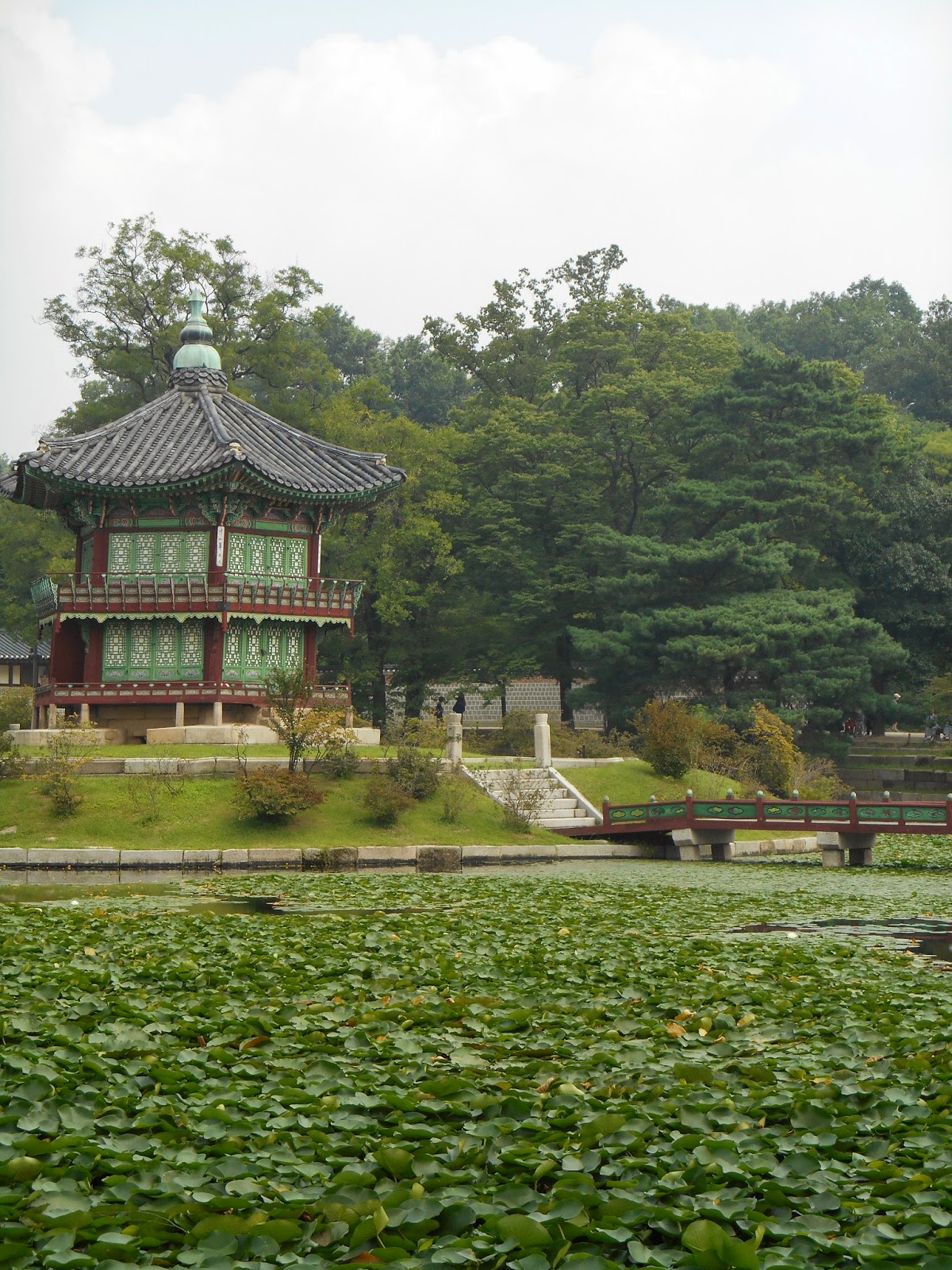I feel like this is really one of those "must see" things in Korea. It was the major royal palace for a long time, but was destroyed when the Japanese colonized Korea. It's (obviously) been rebuilt and restored since then. So, this place is not only fascinating for me as a Korean-American, but also from an archaeological perspective.
Anyway.
First, how to get there. Easy-peasy. Take the Orange Line (line 3) to Gyeongbukgung Station and take exit 5. It's literally right there. If the historical significance and ease of access aren't enough to make you add it to your list, the subway exit looks like this:
The Royal Palace Museum and Korean Folk Museum are also right there and worth checking out (either on this visit or in the future). They are both free (except for special exhibitions) so why not?
Now, back to the Palace.
Admission is usually 3,000 won for adults...but I went on Chuseok, so admission was free. You can pay for the audio tour, which is interesting, but not nearly as in depth as I thought it would be. Regardless, unless you are with someone who is very Korean history savvy, it is worth the cost of renting one. It's available in several languages, and really, how it works is the coolest thing. They give you a map and a "pointy thing." You touch the pointer to where you are on the map and it just knows and tells you. To me, that little bit of technological ingeniousness was worth the cost of the tour itself.
Let's make this very, VERY clear: you are not entering "the" palace you are entering the "palace grounds". You are NOT going to go inside a building unless it is one of the adjacent museums. You can walk right up to the threshold of any number of buildings, but there you will stop. You can only look in.
However, the building are lovely. I've always loved Asian architecture...the smooth, graceful curves, the fine detail work, the rich, vibrant colors...and Gyeongbukgung Palace does not disappoint. There are particularly fine details in the pillar caps on the main palace building's "pavilion." Each of the pillars is capped with an animal from Asian zodiac or an animal important to Korean culture.
The gardens are a nice walk. I think they are probably more lovely in the spring and early summer. Even so, in the late summer with light breezes, they made for a nice relaxing walk. The ponds would be especially gorgeous in the early summer with the lotuses blooming.
You could call it a day at this point, but really, why? Take an extra 30 minutes and venture out the front gates to see Sejong himself...or rather, his statue.
Plus, you can time your visit (or realize when things are happening and wait like I did) to watch the changing of the guards. You can even try on the guards' clothing of you want. The line for that gets long pretty quickly, so if this is a "must do" for you then I suggesting getting to the palace early and doing this first.





















No comments:
Post a Comment